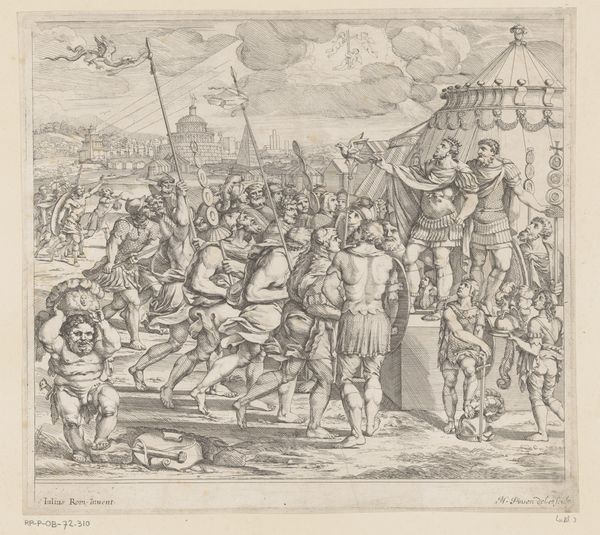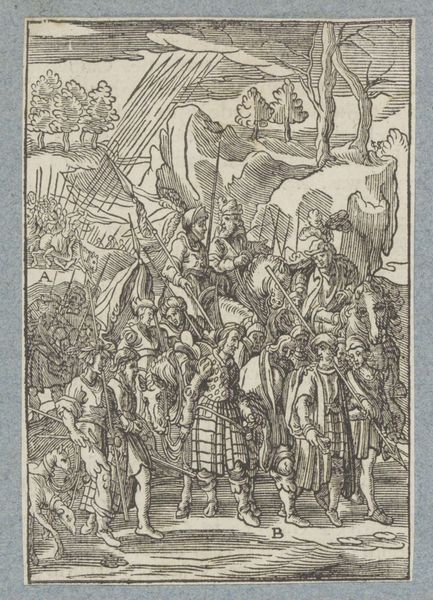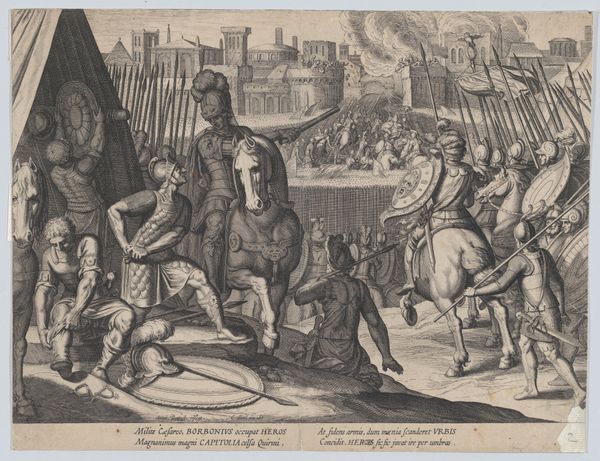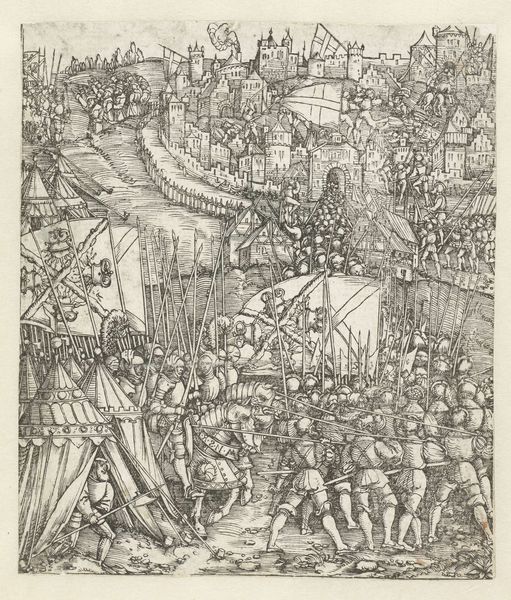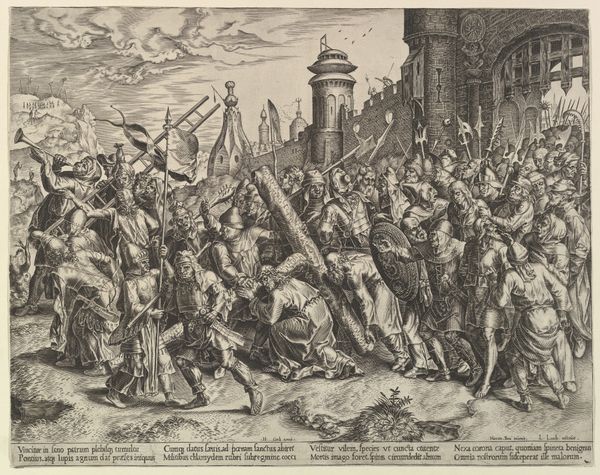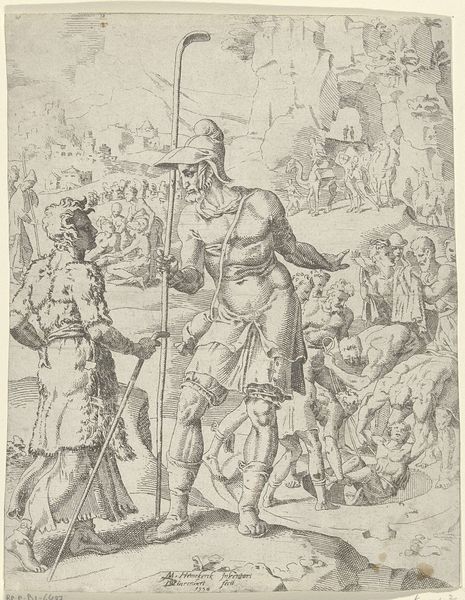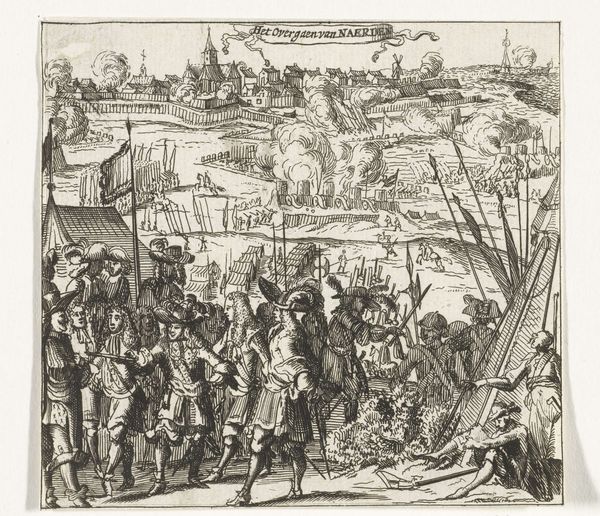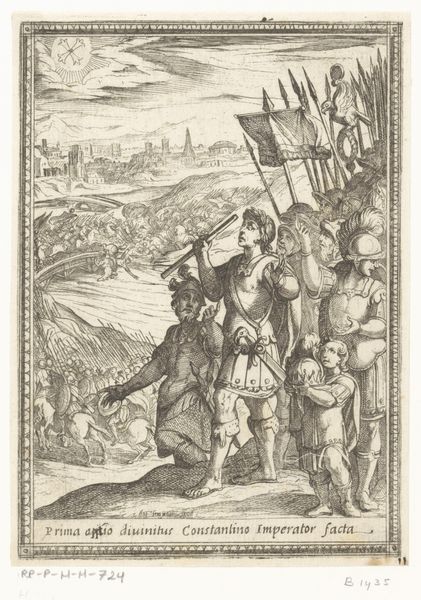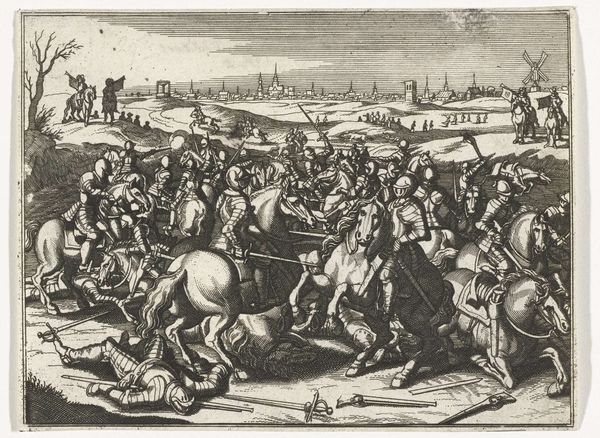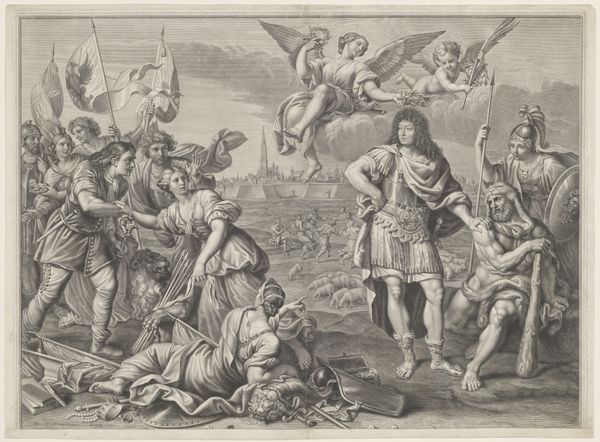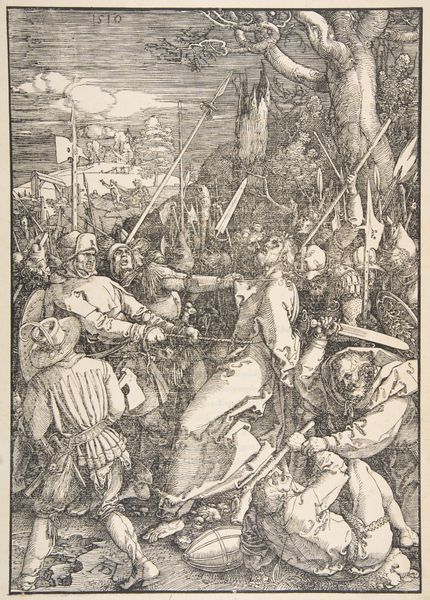
Battle scene with a man about to be stabbed with a sword at lower right 1730
0:00
0:00
drawing, print, engraving
#
drawing
#
ink drawing
#
narrative-art
#
baroque
# print
#
figuration
#
form
#
line
#
history-painting
#
engraving
#
realism
Dimensions: Plate: 13 1/4 × 8 11/16 in. (33.6 × 22 cm) Sheet: 15 3/4 × 9 3/4 in. (40 × 24.8 cm)
Copyright: Public Domain
Curator: Just look at the density of this image! What's your immediate impression? Editor: Chaos, plain and simple. There’s an awful lot going on; violence and intensity certainly dominate the scene. Curator: That's definitely evident. We're looking at "Battle scene with a man about to be stabbed with a sword at lower right," a work made around 1730, by Jan Caspar Philips. It's a print, an engraving in ink. Editor: You know, examining the engraved lines and considering Philips's labor-intensive process, one might ponder the distribution and consumption of these images. Prints like this could disseminate narratives widely, shaping public opinion and awareness of historical or political events. How do you see it working? Curator: I see the function of an easily distributable image shaping collective memory of conflicts; it clearly served a public role, perhaps reinforcing national identities. Notice the architecture and naval ships in the distance and how Philips situates the violent confrontation within a larger geographic context. Editor: I’m fascinated by the contrast between the idealized depiction of conflict – you know, the heroic gestures – and the sheer brutality rendered in such a reproducible format. Was this designed for mass consumption or targeted toward a specific social class? Curator: Prints were an affordable art form during that period. Philips also had patrons he probably sold to so likely, its consumption wasn't as narrow as you might expect. How does it strike you from an aesthetic standpoint? Editor: The composition definitely guides the eye through the action—the figures intertwine and overlap. The scene captures so much with so little materially, but it's all about how many were made and seen, and what messages that promoted. Curator: I agree. Studying an artwork like this makes me contemplate not only artistic skill but how power and ideology circulated through visual culture. Editor: Right, understanding its social context and how Philips created his pieces makes me consider how institutions have both supported and been impacted by this kind of material.
Comments
No comments
Be the first to comment and join the conversation on the ultimate creative platform.
